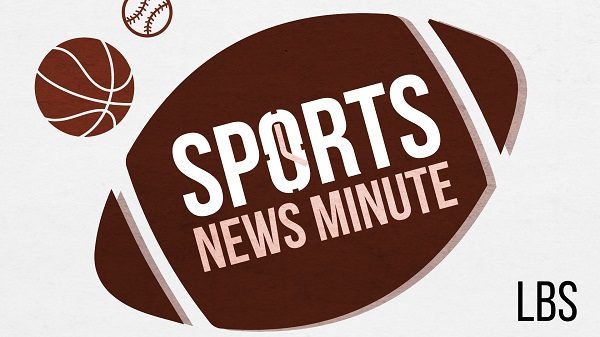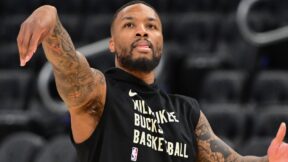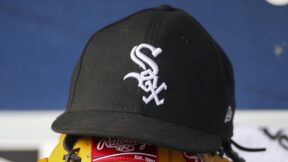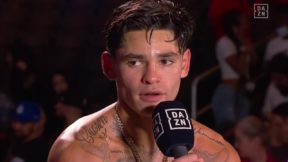MLB Trade Bait and Switch
 The dog days of summer have arrived folks, with the exhilaration of a schnauzer raising its leg to mark its territory on a lamppost. The waning weeks of July. Talk of the magic number being wittled down to 50, the SEC media day, which takes half as long as it reportedly did to create the world, and your favorite publication’s requisite “Where Are They Now?” issue, which is editor’s code for: two-week break, nothing interesting to write about anyway.
The dog days of summer have arrived folks, with the exhilaration of a schnauzer raising its leg to mark its territory on a lamppost. The waning weeks of July. Talk of the magic number being wittled down to 50, the SEC media day, which takes half as long as it reportedly did to create the world, and your favorite publication’s requisite “Where Are They Now?” issue, which is editor’s code for: two-week break, nothing interesting to write about anyway.
If you have decided to take a couple of month’s sabbatical from the ongoing baseball season, you probably have missed the fact that the Pirates have been spotted from land for the first time since before the times when swashbuckling was only confined to Twitter and yelling “Land, ho” in a public place had an entirely different meaning. The Dodgers still continue to be the league’s collection plate, and the Cubs continue to forget that they don’t play in Chicagone. Oh, and did I mention the Pirates were doing something other than sink like steel to the bottom of the Allegheny? So, then, what’s the perfect way to stifle a midsummer night’s scream about the lack of interesting subject matter in sports, as well as the ongoing baseball season? Say it if you know it: the non-waiver trade deadline.
At first, it may seem like a mouthful. A poet’s worst nightmare: let’s see Edgar Allen Poe work a no-trade clause reference into his work. Seven syllables, a hyphen, and a cloud of dust. Not even Woody Hayes would lay claim to that. But, after a while, it grows on you, and then it becomes Muzak for the brain: something that won’t leave the confines of your cranium once the words have been heard – like a Lee Greenwood or Michael McDonald song.
It’s a date that sneaks up on the unsuspecting, in much the same the way that important events in life do, including birthdays, anniversaries, tractor pulls. For the unwitting, there are numerous questions. Why should I care? Why is there a deadline? What’s being waived, and why is this not included? For fans who may not be able to coherently answer these questions, but are aware of the significance of the final date in July, it is the time when their teams add (or subtract) in the hopes that the incoming (departing) player will become a huge factor (fail miserably with the new team) and help the club win a World Series title (derail other fans hopes) and bask in the elation throughout the fall (using the schaudenfreude as a way to bridge the gap to football season, uh, basketball season, uh, cricket leagues don’t have unions do they?).
At the moment, general managers are scrambling to answer phones with the fervor of a PBS telethon phone screener. Eric Hinske’s trade value … made possible by viewers like you. A pitcher. A hitter. A late-inning guy. A utility player. Guys that fill these roles will have been or will be traded by the time July 31st rolls around, becoming the important missing piece or another misshapen part that came along with the puzzle, not able to fit no matter how hard one pounds their fist or tries to alter it with a pair of scissors. The organization making the trade will be hailed for their foresight or derided with the benefit of hindsight. Others will rub their hands together in excitement at the latest minor leaguer, a soon-to-be AA acquisition, to say nothing of where he’ll end up in the organization.
The madness has already begun.
Jeff Keppinger was traded from Houston to San Francisco, where he will replace his baseball anonymity in Houston by playing for a team that doesn’t print the names on the back of their home jerseys. Wilson Betemit picked up his stakes (steaks?) from Kansas City and went to Detroit, where the Tigers are expecting that he will uphold his reputation for having a betemit than bat (you can keep that one).
Buyers. Sellers. Trades and more trades. This weekend’s deadline has all the drama and intrigue of a showdown on the floor of the New York Stock Exchange. Just swap out inanimate object commodities like soybeans and lean hogs for baseball “commodities” like Carlos Beltran, Brett Myers, and Jeremy Guthrie, who have, at times, been just as costly as gold but as exciting as borax.
Baseball lore is filled full of stories of trades made that defy logic. Joel Youngblood holds the distinction of being the only player in history to get hits for two different teams in two cities on the same day: a base hit with the Mets against the Cubs at Wrigley then, following a trade to Montreal, getting a single at Philadelphia’s Veterans Stadium, enough travel to add a little age to that Youngblood. As a minor league pitcher, Tim Fortugno – whose last name would be perfect for a trendy, upscale restaurant – was once traded for $2500, and 144 baseballs. His Big League career spanned three years. No word on whether he was outlasted by his round counterparts.
Hall of Famer Dave Winfield was certainly no slab of meat during his playing days, but that didn’t stop him from essentially being traded for one during his career. Just before the baseball strike in 1994, The Wave was dealt at the deadline by Minnesota to Cleveland for future considerations. The strike forced the cancellation of the season two weeks later without Winfield every playing for the Indians that season. However, Indians executives made good on their offer by taking their counterparts out to dinner. No word on whether the Twins brass ordered lobster, but after Winfield retired the following season having hit .191 in his time in an Indians uniform, the crustacean probably would have been more productive in C-Town than Dave was.
The sport has even seen a PG-13 deal or two, especially during spring training in 1973. Then-Yankee pitchers Mike Kekich and Fritz Peterson were known less for their Major League careers than their affinity for each other’s families. With the zeal of geek trading card dealers at Comic-Con, the two pulled off the oddest trade in New York since Manhattan was dealt for the 17th century equivalent of a gift certificate. They exchanged their wives, kids, and homes, even throwing Fido in to sweeten the deal.
Another phenomenon witnessed in baseball trading is the practice of moving one guy for “a player to be named later.” This can be interpreted as a GM, not being able to make up his mind – do I want sprinkles, chocolate chips, or Jeff Francouer? – as well as a humbling turn of events for the player(s) involved. “We value you a lot. Just not enough to trade you for anything substantive.” When I was much younger (editor’s note: a lie, this was 5 minutes ago), I wondered why they would be punishing the other guy by forcing him to change his name to “Later” (hold for laughter). It could be worse; a player could always be traded for balls and bats to which Minor Leaguers are sometimes subjected, or, as in the case of Blue Jays second baseman John McDonald, be traded for yourself (baseball’s version of re-gifting).
So, on Sunday, as the hours to the deadline draw near, some will be tied to their cell phone for the latest developments, others will scour the Internet to find out who’s going where. Me? I’ve got cleaning to do. That day, I think I’ll be trading in my keyboard for a scouring brush.







